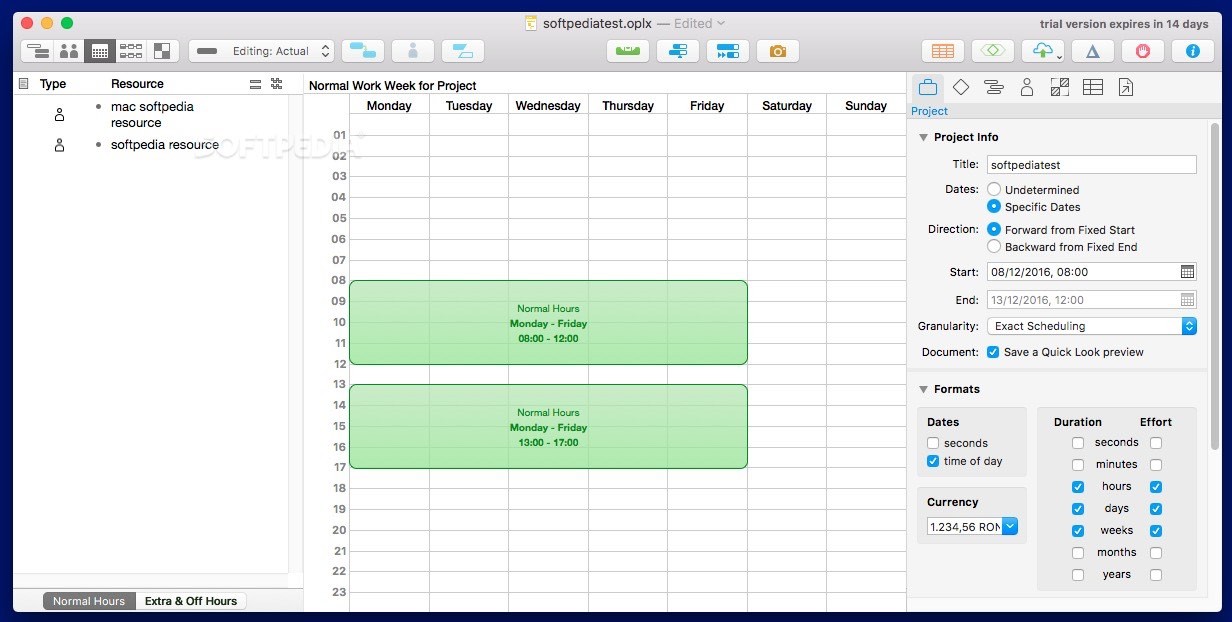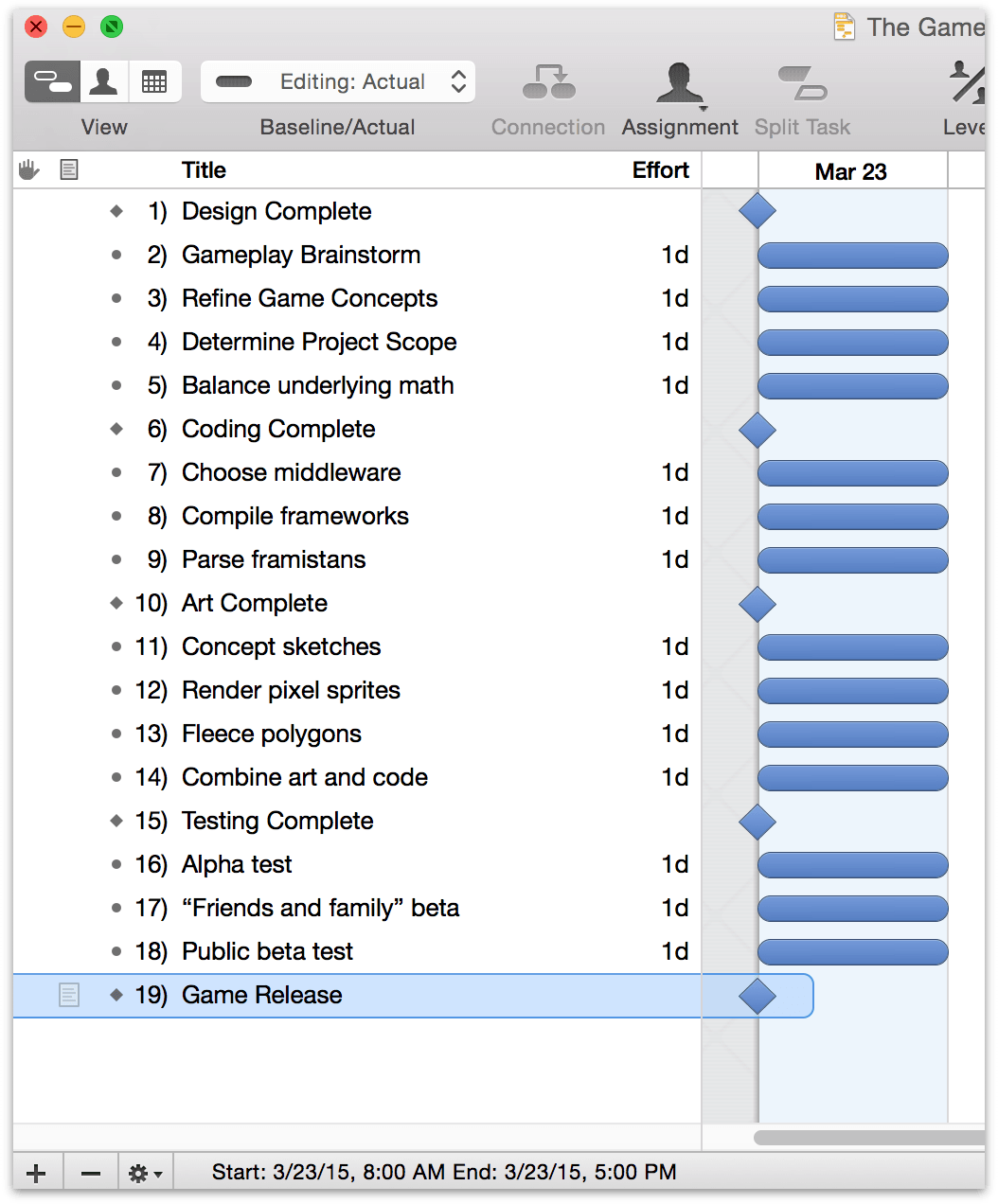
(Manual task scheduling replaces the “locked” task date functionality offered by previous OmniPlan versions.)ĪbsoluteEndLimit ( Date r/o) Tasks which are set to be scheduled manually will use the start and end dates you provide OmniPlan will not attempt to automatically reschedule them.
OMNIPLAN EXAMPLES MANUAL
NOTE: In OmniPlan 4.x, tasks now support manual scheduling. NOTE: In the properties list shown below r/o indicates a property whose value is “read-only” or can only be read, not changed by the script. Instance PropertiesĪs with most scriptable objects, instances of the Task class have properties that define their abilities and usage. Each task has attributes such as start and end dates, a completion percentage, and resource assignments. To edit or delete existing templates, or set a default template for new projects, use the Templates pane of OmniPlan Preferences.A Task is an element of a Scenario, and is anything that needs to get done in order for the project to move toward completion. Once the document is ready, choose File > Save As Template.Įnter a name for the template and confirm it. Everything about a project, including its contents, its styles, the state of the inspectors, the columns displayed, and so on, can be saved in a template. Start by creating a new project normally with File > New Project. You can configure all of these things once in a template file, then create new documents from that template. For example, there might be certain resources you use for every project, a common task structure, certain named styles you like to use, or a standard set of working hours for your company. Creating TemplatesĪ template is a file set up to be a starting point for a new project. The choice of where to save your project files may also be informed by cloud storage considerations, or your multi-user collaboration setup (with OmniPlan Pro).

This corresponds to the Automatically Level Resources setting in the Project menu.ĭue to macOS sandboxing restrictions, files saved outside of locations that OmniPlan’s application sandbox can reach cannot be reached by OmniPlan URLs created with Edit > Copy Link To Task/Resource. Resources-Choose whether the project levels resources automatically, or only upon request. These correspond to the Dates set in the Project inspector. Start Date/End Date-If the project has a known start date (for a project with Forward direction) or end date (for a project with Backward direction), enter it here. This corresponds to the Granularity setting in the Project inspector. Granularity-Choose whether tasks are scheduled exactly (down to the second), or with some degree of rounding. This corresponds to the Direction setting in the Project inspector.


Three are built-in with OmniPlan you can create your own if you find that there are specific attributes you use frequently.ĭirection-Choose whether the project is scheduled forward from a fixed start date or backward from a fixed end date. Template-Choose a template file with a set of predetermined characteristics for your project. This opens the New Project Assistant: a window with a set of initial options that form the foundation of a new project. To create a new project, choose File > New Project ( Command-N). This chapter describes creating a project using the New Project Assistant, as well as creating templates for kickstarting future projects with frequently used attributes. When you first launch OmniPlan you are presented with the New Project Assistant, a tool that offers choices for the most commonly used settings when creating a new project.Īfter choosing the settings you want, a new OmniPlan document appears, ready to develop for the specific needs of your project. Balancing Resource Loads Across Projects.Using Simulations to Estimate Milestone Completion (Pro).


 0 kommentar(er)
0 kommentar(er)
